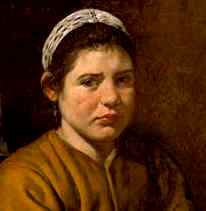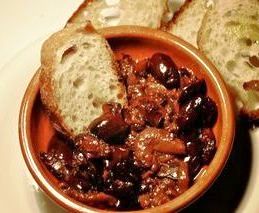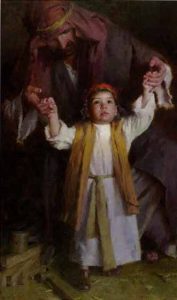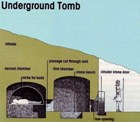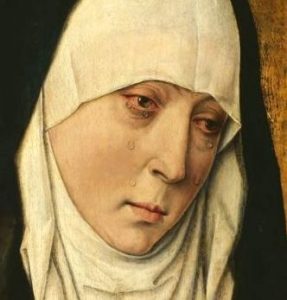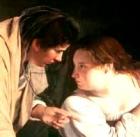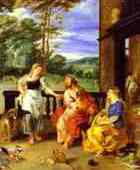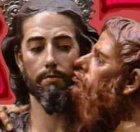Jesus’ world: a reconstruction
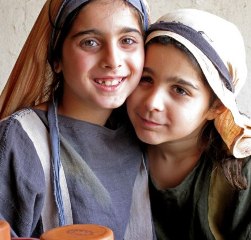 There’s an enormous gap between Martha and Mary’s world, and ours:
There’s an enormous gap between Martha and Mary’s world, and ours:
- if we were in their world, we’d see 1st century Jewish Palestinians as superstitious and irrational
- if they were transported into the modern world, they would see us as reckless, lost, and confused.
Not only that. We might struggle to understand Jesus. He came from the peasant class, so he was more aware than we might be of
- the yawning gap between rich and poor
- the cruel injustice of society
- the constant grind of poverty.
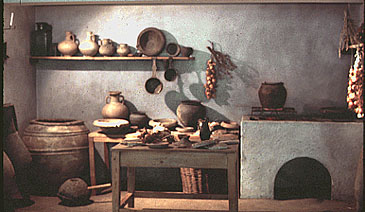
Reconstruction of a 1st century kitchen
Jesus did not have much in common with city-people from Jerusalem, especially if there were from the priestly class (see What did a priest in ancient Jerusalem do?)
This is where his friendship with Martha, Mary and Lazarus was especially valuable since as Jerusalemites they provided not only hospitality but news and support as well.
Social classes in the ancient world
Then, as now, the social classes formed a pyramid, but it was a much steeper pyramid than the one we know.
- The elite class consisted of only about 3% of the population. They were the only real consumers of luxury items, with their wealth coming from ownership of the land.
- There was hardly anyone we would call middle class, at least as we know it.
- At least 70-80% of the people were peasants, that great silent group of the ancient world. Their main concern was whether there would be enough food to keep their family alive.
Jesus lived in a class-conscious society.
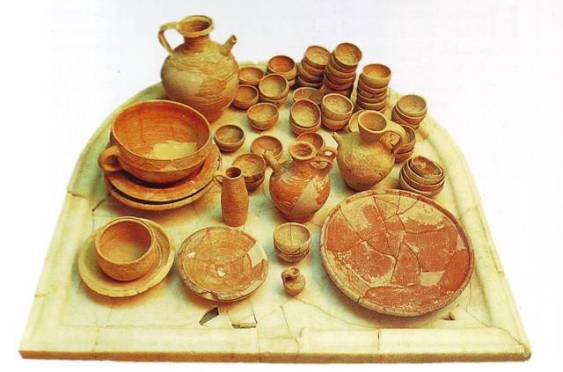
Food utensils from Roman Judea, circa 350AD; similar items would have been used in Martha and Mary’s house, and at the Last Supper
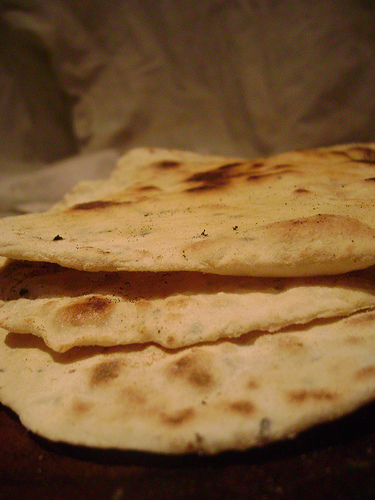
The bread eaten at that time was usually flat bread; this would have been eaten at the dinner at Bethany, and at the Last Supper
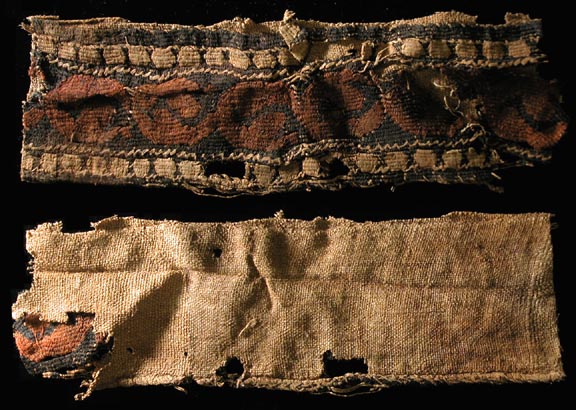
Women were expected to weave fabric for the clothing worn by members of their household
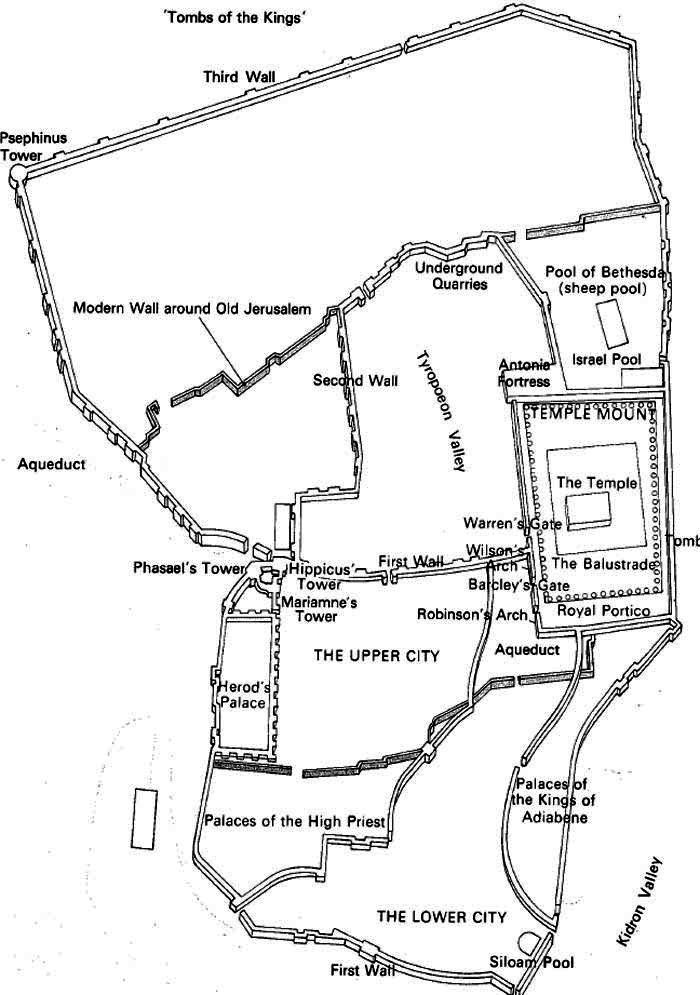
Map of Jerusalem at the time of Jesus; Mary and Martha lived on the hills to the right of the Kidron Valley (see bottom right of map)
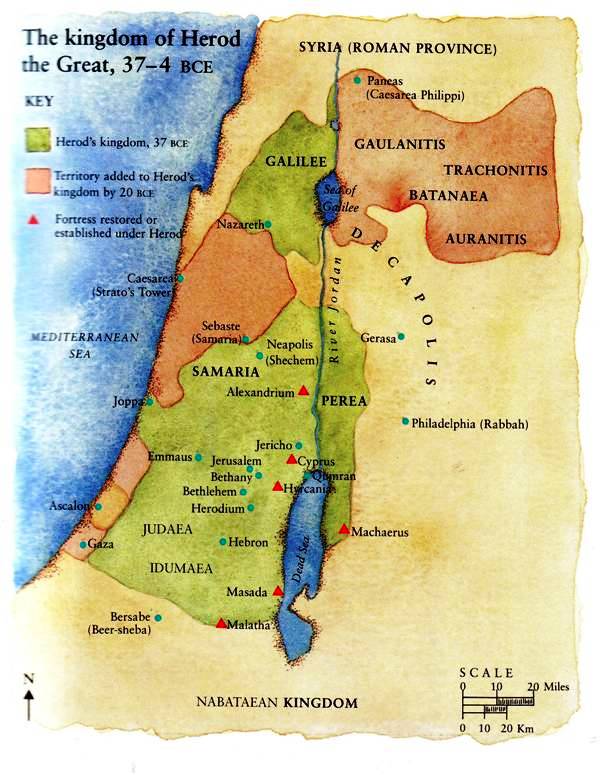
Palestine at the time of Jesus
Search Box
![]()
Activities and focus questions
A Letter from the Past
Choose one of the three characters in the Bethany household: Martha, Mary or Lazarus.
Write a letter to that person, asking for more details about what happened in one of the events in which Jesus played a part. Tell them what you already know, then
- ask about life in ancient Jerusalem – see Ancient Cities
- the house they lived in – see Houses in ancient times
- what they were doing – see Family, Work, Religion in Bible times
- what their emotions or reactions were
- what the other people in the story were like, etc.
Compose the letter that Martha, Mary or Lazarus might have written in response to your questions. Give as much information as you can.
Base your response on
- research you have done into the life and people of the times
- a creative reconstruction of possible emotions, reactions, ideas, etc.
Tracing the Last Steps of Jesus
Research the route that Jesus followed through the Jerusalem/Bethany/Kidron Valley area. Find the probable locations of events in the last days of Jesus’ life.
Bible Maps on the Life of Jesus is a useful resource.
The Dinner at Bethany
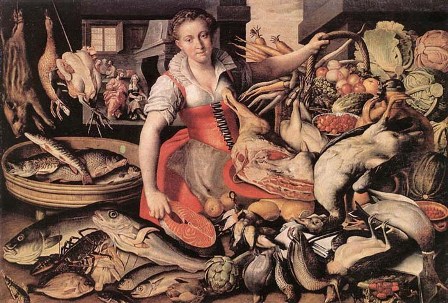
Martha of Bethany in her kitchen, Vincenzo Campi
Find out about meals in ancient Israel,
- the meat, vegetables and desserts that were available ( a famous cook called Apicius wrote a cookbook at about the time these events occurred, using ordinary ingredients as well as expensive ones; you might want to locate this book and consult his recipes)
- the type of cooked dishes that were served
- the layout of a dining room
- the etiquette of dining.
You can find this information at Food in the Bible: a land of milk and honey
Using this information, place yourself at the meal in Martha and Mary’s house and describe it:
- imagine yourself there
- describe Jesus and the other people there
- relate the incident where Martha objects to Mary
- and your reaction to Jesus’ words.
Dozens of extra ideas at Activities for Bible Study Groups and Schools
Martha & Mary links
Major Events
Laying out the dead, burying a family member
- Should women work or stay at home?
- A letter from the past
- Tracing the last steps of Jesus
- The dinner at Bethany
- Famous quotations
- Focus questions for gospel study
As far as the Jerusalemites were concerned, Jesus and his friends were a group of provincial dissidents from Galilee. Judas, on the other hand, was from Jerusalem. So what was he doing with Jesus? And why did he object to Mary anointing the feet of Jesus?

© Copyright 2006
Elizabeth Fletcher



